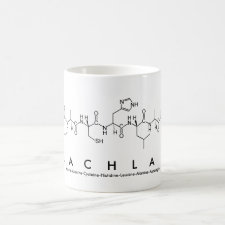
Authors: Hashim SNNS, Boysen RI, Schwarz LJ, Danylec B, Hearn MTW
Article Title: A comparison of covalent and non-covalent imprinting strategies for the synthesis of stigmasterol imprinted polymers.
Publication date: 2014
Journal: Journal of Chromatography A
Volume: 1359
Page numbers: 35-43.
DOI: 10.1016/j.chroma.2014.07.034
Alternative URL: http://www.sciencedirect.com/science/article/pii/S0021967314011261
Abstract: Non-covalent and covalent imprinting strategies have been investigated for the synthesis of stigmasterol imprinted polymers. The synthesized molecularly imprinted polymers (MIPs) were then evaluated for their recognition and selectivity towards stigmasterol via static and dynamic batch-binding assays and their performance measured against control non-imprinted polymers (NIPs). MIPs prepared using the conventional non-covalent imprinting method displayed little to no binding affinity for stigmasterol under various conditions. In contrast, the application of a covalent imprinting approach using the novel post-synthetically cleavable monomer-template composite stigmasteryl-3-O-methacrylate resulted in the fabrication of a MIP that successfully recognized stigmasterol in both organic and partially aqueous environments. The affinity and selectivity of the covalently prepared MIP was enhanced when undertaken in a partially aqueous environment consisting of an acetonitrile/water (9:1, v/v) solvent mixture. These features have been exploited in a molecularly imprinted solid-phase extraction (MISPE) format, wherein the preferential retention of stigmasterol (with an imprint factor of 12) was demonstrated with 99% recovery in comparison to cholesterol (imprint factor of 6) and ergosterol (imprint factor of 4) while in the presence of several closely related steryl analogues
Template and target information: stigmasterol
Author keywords: Molecularly imprinted polymers, Covalent and non-covalent imprinting, Solid-phase extraction, Stigmasterol, Phytosterols



Join the Society for Molecular Imprinting

New items RSS feed
Sign-up for e-mail updates:
Choose between receiving an occasional newsletter or more frequent e-mail alerts.
Click here to go to the sign-up page.
Is your name elemental or peptidic? Enter your name and find out by clicking either of the buttons below!
Other products you may like:
 MIPdatabase
MIPdatabase









